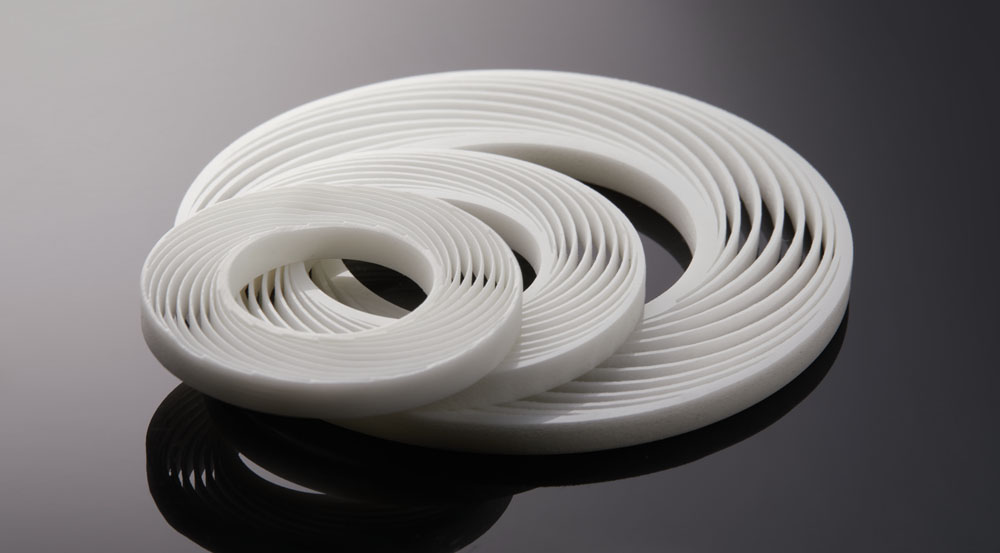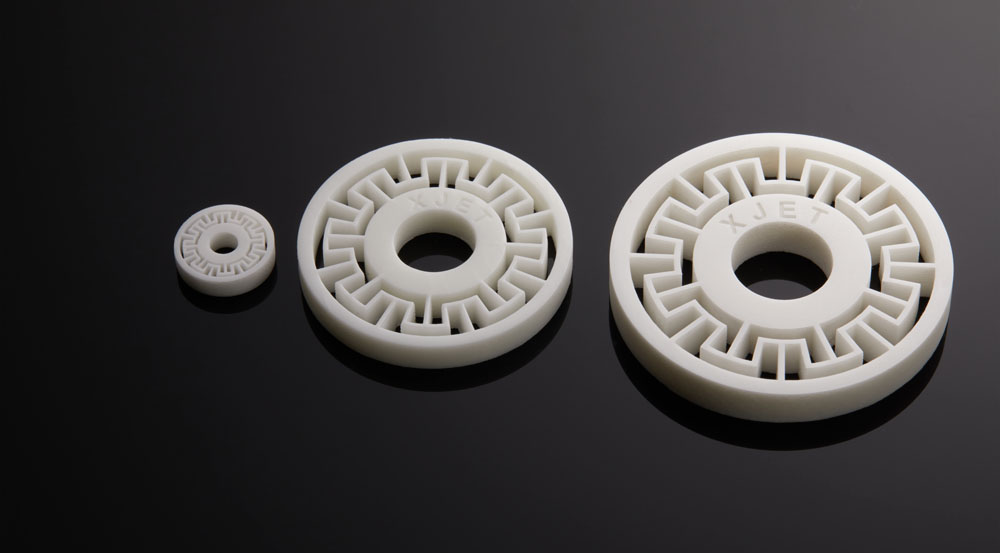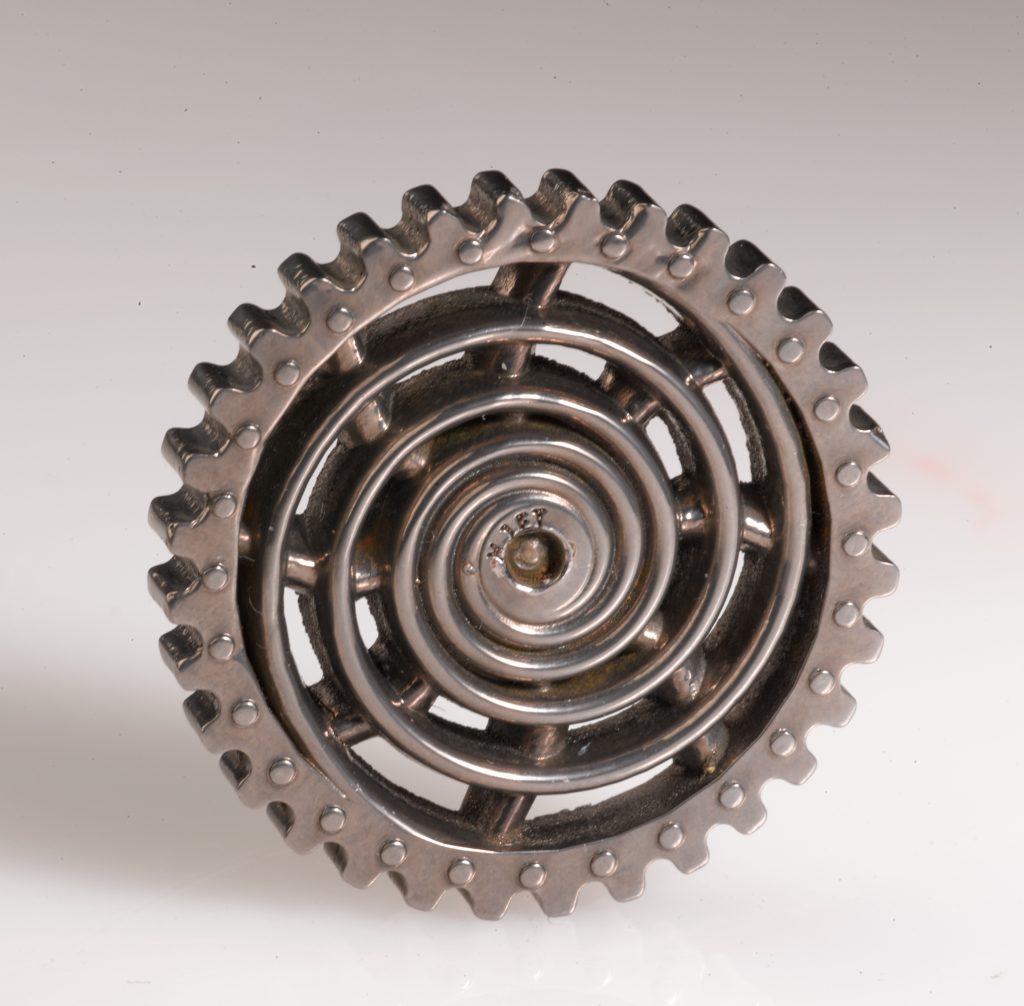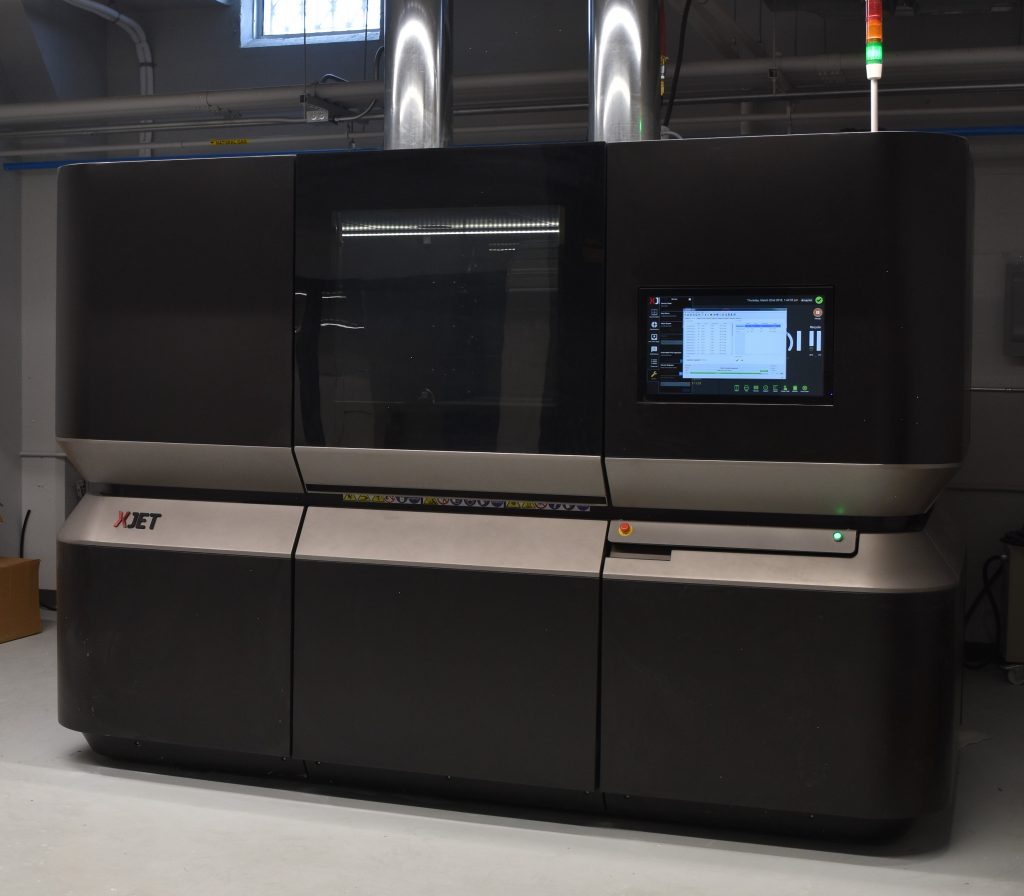XJet NanoParticle Jetting AM System Now Operating in U.S.
July 25, 2018
If I could easily hop over to Ohio, I would make my way to tour the Youngstown Business Incubator (YBI). This facility is home to several entrepreneurial companies as well as America Makes, the leading partner for the national initiative for additive manufacturing (AM). Between YBI, America Makes and nearby Youngstown State University (YSU), the consortium owns and operates industrial AM systems from all seven recognized AM technology families including equipment from 3D Systems, EOS, ExOne, Markforged and Stratasys.
 Zirconia ceramic part 3D printed on an XJet NanoParticle Jetting system. Image courtesy of XJet.
Zirconia ceramic part 3D printed on an XJet NanoParticle Jetting system. Image courtesy of XJet.To appreciate the depth of technical capabilities this partnership offers for research, development and training, note that YSU was only the second U.S. university to acquire at least one of each of these seven AM types. (For a quick reference guide to the different technology families, see the excellent infographic from Hybrid Manufacturing Technologies.) Recently, YBI marked another milestone with the first U.S. installation of an XJet Carmel 1400 system. (Watch a short video on the installation of the system in April 2018.)
Truly Unique Ceramic and Metal AM Systems
Founded in 2005 and headquartered in Rehovot Israel, XJet is staffed with many veterans of Objet Geometries, developers of PolyJet AM technology (now owned and marketed by Stratasys). These people thoroughly understand the intricacies of jetting liquid polymer materials of differing densities through thousands of micro-nozzles. For this newest endeavor, the XJet group has applied their ink-jet technical expertise to liquid dispersions of metals and ceramics, to create highly detailed end-use products.
XJet calls its liquid dispersion methodology NanoParticle Jetting (NPJ): its systems use 24 print-heads with 512 nozzles each to jet liquid suspensions of solid nanoparticles into ultra-thin layers. The build volume is kept at a high-temperature (500 degrees F), so the liquid immediately evaporates. The nanoparticles then bond through a combination of van der Waals forces plus the proprietary bonding agent, forming green parts that are later sintered.
Printing in layers under 10 microns, the system deposits both build material and soluble support material during each pass, with the supports planned by the system software (this video show a bird's eye view of this layer-by-layer process). Parts stay on the removable build-plate while going through a water-based wash to remove the supports—no mechanical work is necessary.
 Detail possible in ceramic parts 3D printed on an XJet Carmel 1400 system. Image courtesy of XJet.
Detail possible in ceramic parts 3D printed on an XJet Carmel 1400 system. Image courtesy of XJet.At this year’s Additive Manufacturing Users Group conference, Dror Danai, XJet chief business officer, gave a presentation called “The Power of Powderless” highlighting the advantages of his company’s technology compared to those of powder-bed based AM systems (where parts are built either through applied energy—laser or electron beam—or by depositing binder material). With soluble support removal, NPJ parts compress the traditional post-processing steps, saving not only complexity but time and money.
By eliminating the use of powders, XJet has also addressed safety. “Since we don’t deal with powder,” says Danai, “we eliminate issues of static electricity, inhaling and training for fire protection. And both build material and support material come in a sealed cartridge that is simply loaded into the system.”
 Stainless steel part 3D printed on an XJet Carmel 1400 system. Image courtesy of XJet.
Stainless steel part 3D printed on an XJet Carmel 1400 system. Image courtesy of XJet.Final sintered parts also have half the shrinkage, in each direction, of current powder-bed-built parts. Users do not even need to scale up designs; the build software takes the solid model file and calculates shrinkage allowance in a process transparent to the user. Use of stochastic particles, with their range of sizes that fit together with natural “packing,’ results in predictable parts with 99.9% density.
High-Quality Parts, Available to Any User
Commenting on XJet part quality, Barb Ewing, CEO at YBI, says, “The detail you get from the high resolution is outstanding. For many businesses, particularly in the healthcare sector, this could remove the final barrier to using this technology.”
Currently, YBI’s XJet Carmel system builds with zirconia ceramic nanoparticle material and its complementary support material; both are supplied and loaded into the machines in sealed cartridges. Metal ink will be available in Q4 2018.
 XJet Carmel 1400 system, newly installed at the Youngstown Business Incubator in Youngstown OH. The system uses a proprietary process called NanoParticle Jetting to 3D print in ceramics and metals. Image courtesy of Youngstown Business Incubator.
XJet Carmel 1400 system, newly installed at the Youngstown Business Incubator in Youngstown OH. The system uses a proprietary process called NanoParticle Jetting to 3D print in ceramics and metals. Image courtesy of Youngstown Business Incubator.Ewing explains that YBI’s goal is to make all its AM machines accessible not only to students and faculty but to industry and individual entrepreneurs. “Our goal with the XJet in particular,” she notes, “is to train others how to use it and make it available for them.”
Corey Patrick, director of marketing and communications at YBI, notes that if someone from out of state wanted to come use the XJet system for an R&D project, they could do so once trained. “Or, if they’re looking to have something printed, our AM team has developed a fee-for-service approach where we can do the print for them.” Patrick says they have a large list of services and offerings for anyone from individuals looking to get a prototype printed all the way up to corporations seeking ways to reduce time, cost, weight, etc.
Parties interested in printing on or working with any of the AM equipment should contact Stephanie Gaffney, YBI director of AM programs; email [email protected] or phone 330-746-5003.
Source: Youngstown Business Incubator
Subscribe to our FREE magazine, FREE email newsletters or both!
About the Author
Pamela Waterman worked as Digital Engineering’s contributing editor for two decades. Contact her via .(JavaScript must be enabled to view this email address).
Follow DE





